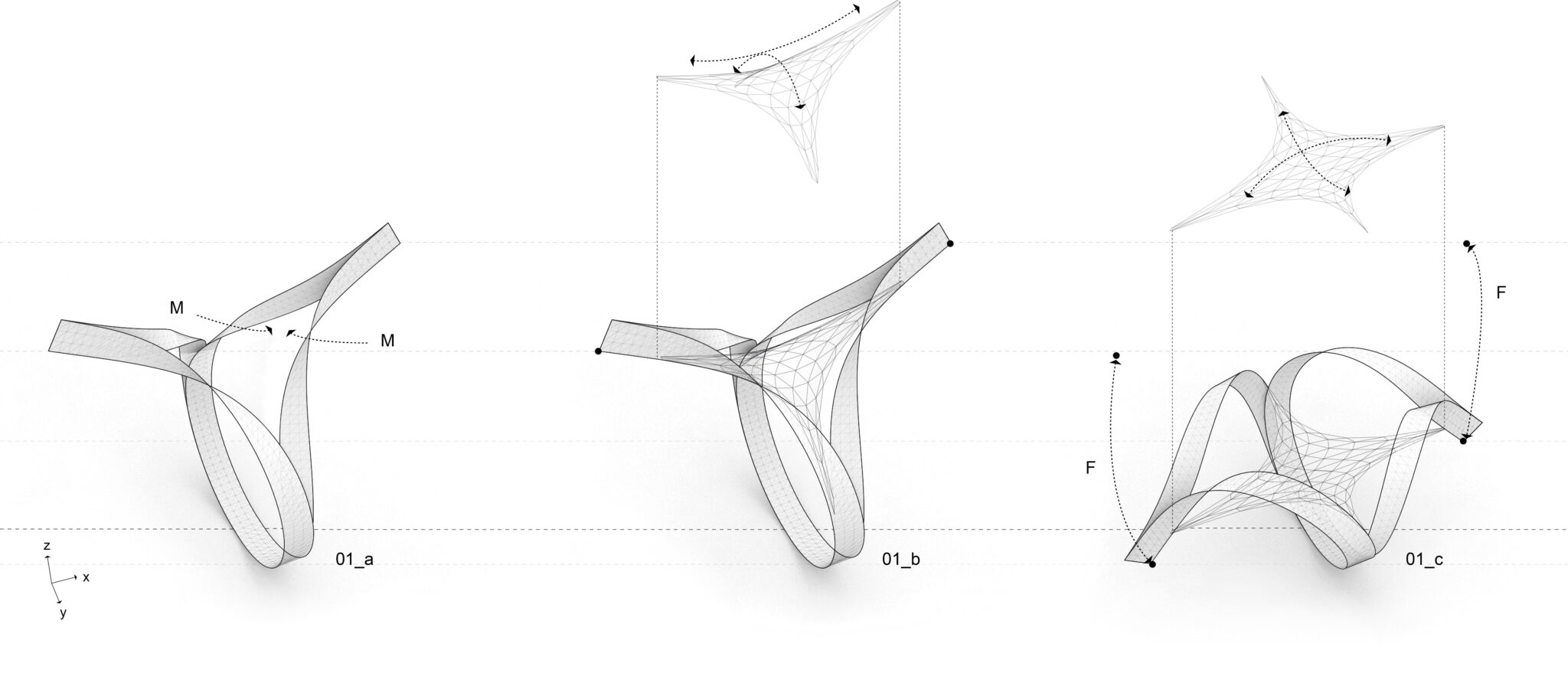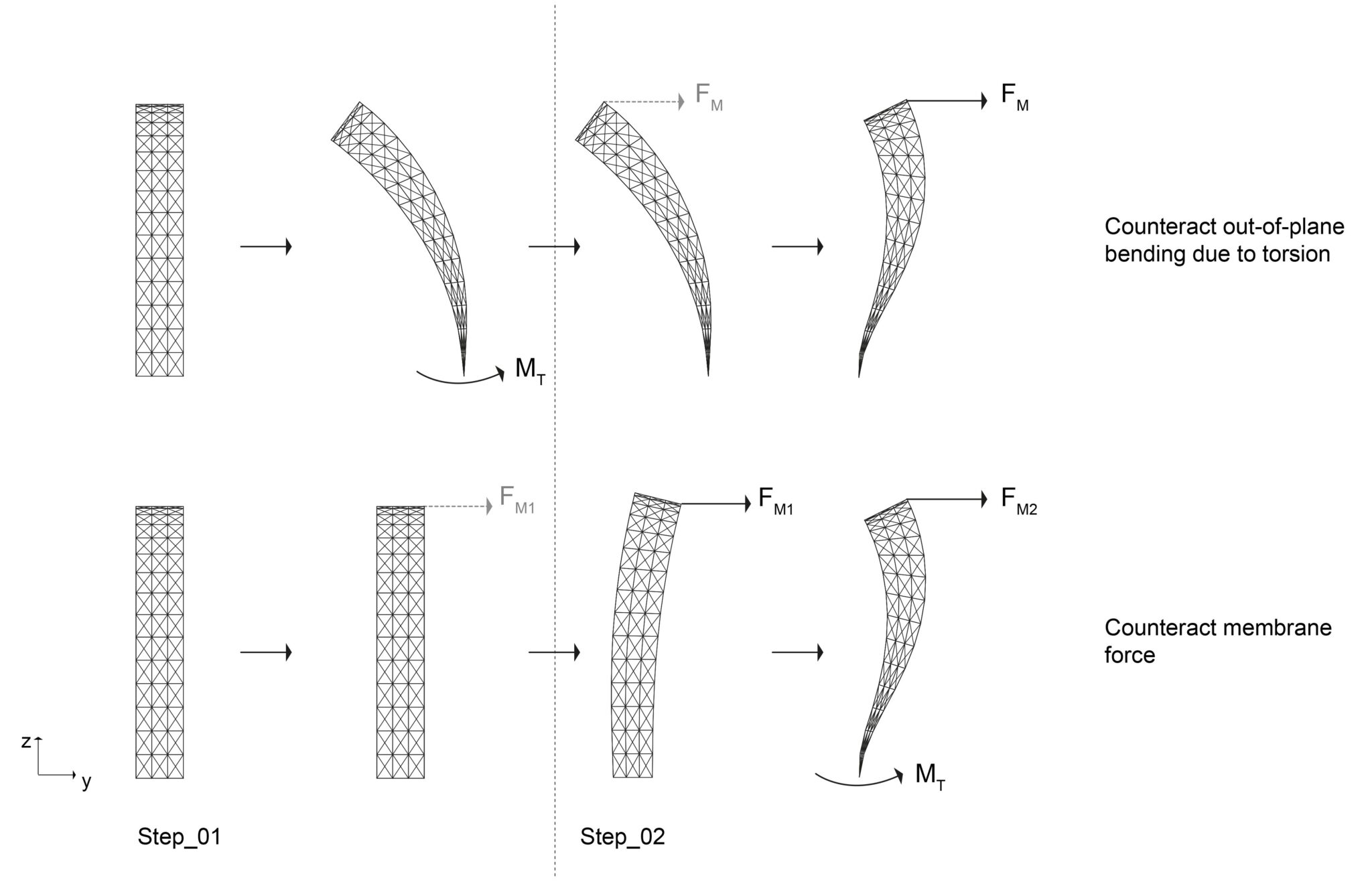TORSION AS A DESIGN DRIVER IN PLATE-BENDING-ACTIVE TENSILE STRUCTURES

ESR01- MULTIPLE STATES OF EQUILIBRIUM FOR BENDING-ACTIVE (TENSILE) STRUCTURES
AUTHOR: EVY L. M. SLABBINCK
Publication: Torsion as a design driver in plate-bending-active tensile structures. In: Proceedings of the IASS Annual Symposium 2017, 25-28 Sept. 2017, Hamburg, Germany by Slabbinck, E. L. M.; Körner, A.; Knippers, J.
This paper investigates and demonstrates the structural and architectural potentials of torsion in plate elements for bending-active tensile structures and evaluates the limits to which torsion can be employed in plate-hybrid structures. Bending?active tensile structures are a novel typology of lightweight structures utilizing integrated bending-active elements as support for a membrane structure. However, aspects of scalability, use of bending-active plates, a membrane-integrated construction process and multiple states of equilibrium are current difficulties found in designing these structures and are mostly unexplored research fields. This new research investigates the advantages of plate structures in conjunction with the geometric stiffening and prestressing effect of tensile elements, the control of geometry, and bi-stable equilibrium state of the membrane through the introduction of torsion during construction. By incorporating an assembly-based approach, the relationship between the bending-active and membrane elements is analyzed and extrapolated to determine the requirements for further prototypical development. The research is conducted by means of small-scale case studies and an integrated finite element analysis. By analyzing the reciprocal interdependence of structural design, assembly processes, material design and architectural geometry, a novel approach to the realization of form- and bending-active structures is proposed.



